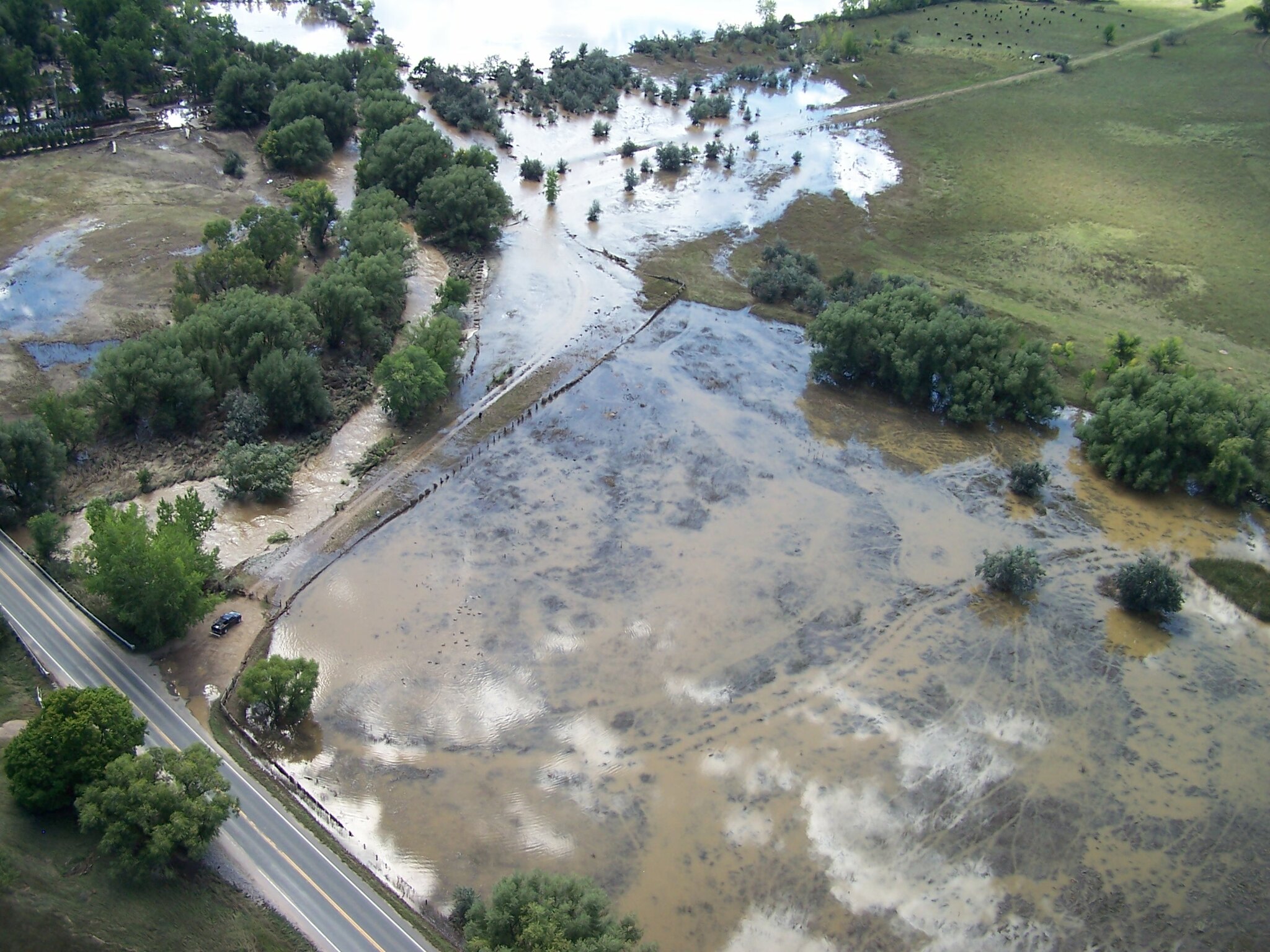Land swap on the table for flood mitigation at CU South

Courtesy City of Boulder
Wednesday, Feb. 5, 2020
After many months of wrangling, haggling, name-calling and finger-pointing, it’s a citizen suggestion that is rising to the top as a potential way to secure flood protection in south Boulder and simultaneously appease the University of Colorado: a land swap.
The idea of CU not building a mini-campus south of the city has consistently been pushed by neighborhood groups opposed to development on the land. A former gravel pit is not suitable for buildings, they said at council meetings and in letters to the editor; CU should have known that when it purchased the 308 acres decades ago. Instead, residents said, Boulder should give CU land elsewhere and take possession of the acreage near TablePostponement of a motion, or a vote Mesa and U.S. 36, to be used for flood mitigation and preserved as open space.
CU, for its part, has never appeared to seriously consider the suggestion. But it seems as if university officials may agree with their most ardent critics about the land’s suitability for building — at least when it comes to housing.
Having a dam, flood wall and detention pond on the site “will greatly impact the usability of the property,” CU wrote in a January 16 letter to Boulder. Therefore, “the university will consider, but cannot guarantee, that housing for university faculty, staff and students will be built on the site.”
Another reason to pursue a land swap emerged at Tuesday night’s city council discussion on CU South; or, rather, 63 million reasons.
That’s how much it would cost just to fill in land to make 129 acres suitable for building and still get the level of protection city council pursued when it originally selected the Variant 1 design in August 2018, according to Joe Taddeucci, Director of Public Works for Utilities. The actual flood mitigation — dam, flood wall, detention area, etc. — can be constructed for $47 million, less than half the estimated $110 million price tag for a 500-year storm design.
“The reason for that is it transitions from dam and flood wall to an earth-moving project as well,” Taddeucci said.
Taddeucci laid out three options for design, based on the size of the storm they are meant to protect against. As the detention area shrinks, protection drops significantly. Cost does, too, though that is directly related to efforts needed to preserve 129 acres for CU to build on.
A 100-year storm would cost $41 million for the flood structures, Taddeucci said. The remaining $26 million in estimated costs would be for fill.

Cost estimates are extremely preliminary, with huge margins of error: “plus or minus 50%,” Taddeucci said. That’s because the design is still in the concept phase. Once work advances and details are firmed up, those margins will shrink.
Council did not debate the merits of the various plans, but members’ questions and comments indicated that the tradeoffs necessary to guarantee CU 129 buildable acres may be too much.
“For what it’s worth, the 500-year plan is the most cost effective per person protected,” Mayor Sam Weaver noted.
Councilwoman Rachel Friend focused on the number of homes and people protected by each option. Do the smaller storm designs offer any benefit to those downstream? she asked.
Yes, Taddeucci explained: The 100-year design will hold less water in the detention area, but it will still prevent that water from going downstream. That may reduce flooding and/or give residents more time to evacuate in the event of a large event.
“There is benefit to everybody having any flood mitigation there,” he said.
It was also Friend who kicked off discussion of a land swap, specifically in the Area III Planning Reserve north of Boulder. Council recently agreed to begin the long process toward annexation with a study of expanding city services.
It will take years; council hopes to tee up a 2025 approval, but the acreage won’t “realistically” be “available” until 2026 or 2027, Senior Planner Phil Kleisler said Tuesday.
Councilwoman Junie Joseph questioned the wisdom of pursuing the land swap without knowing CU’s appetite for such a proposal. “Do we even know if that’s an option” for them? she asked.
Senior Strategic Advisor Frances Draper took to the podium for only a moment, to say that the university has “had some conversations (with city staff) about what we can do for housing and looking at a land swap.”
Boulder owns roughly 200 acres of the Planning Reserve; 30 belongs to Boulder Housing Partners and the rest was purchased with Parks and Recreation dollars. The remainder of the 500 acres along U.S. 36 belong to Boulder County.
A more in-depth discussion will occur at the Feb. 25 study sessionA council meeting where members deep-dive into topics of community interest and city staff present r..., all of which will be devoted to discussing options for CU south. The university may present an update, Draper said. Staff will also provide more details, and the consultant’s report on tradeoffs will be made public ahead of the meeting.
View a Twitter thread of Tuesday’s discussion here.
— Shay Castle, boulderbeatnews@gmail.com, @shayshinecastle
Want more stories like this, delivered straight to your inbox? Click here to sign up for a weekly newsletter from Boulder Beat.
CU South Growth and Development Housing Open Space annexation Boulder Boulder County campus city council city of Boulder CU South dam detention flood mitigation flood protection flood wall housing Junie Joseph land swap Parks and Recreation Planning Reserve Rachel Friend South Boulder Creek Table Mesa U.S. 36 university University of Colorado


0 Comments Leave a comment ›